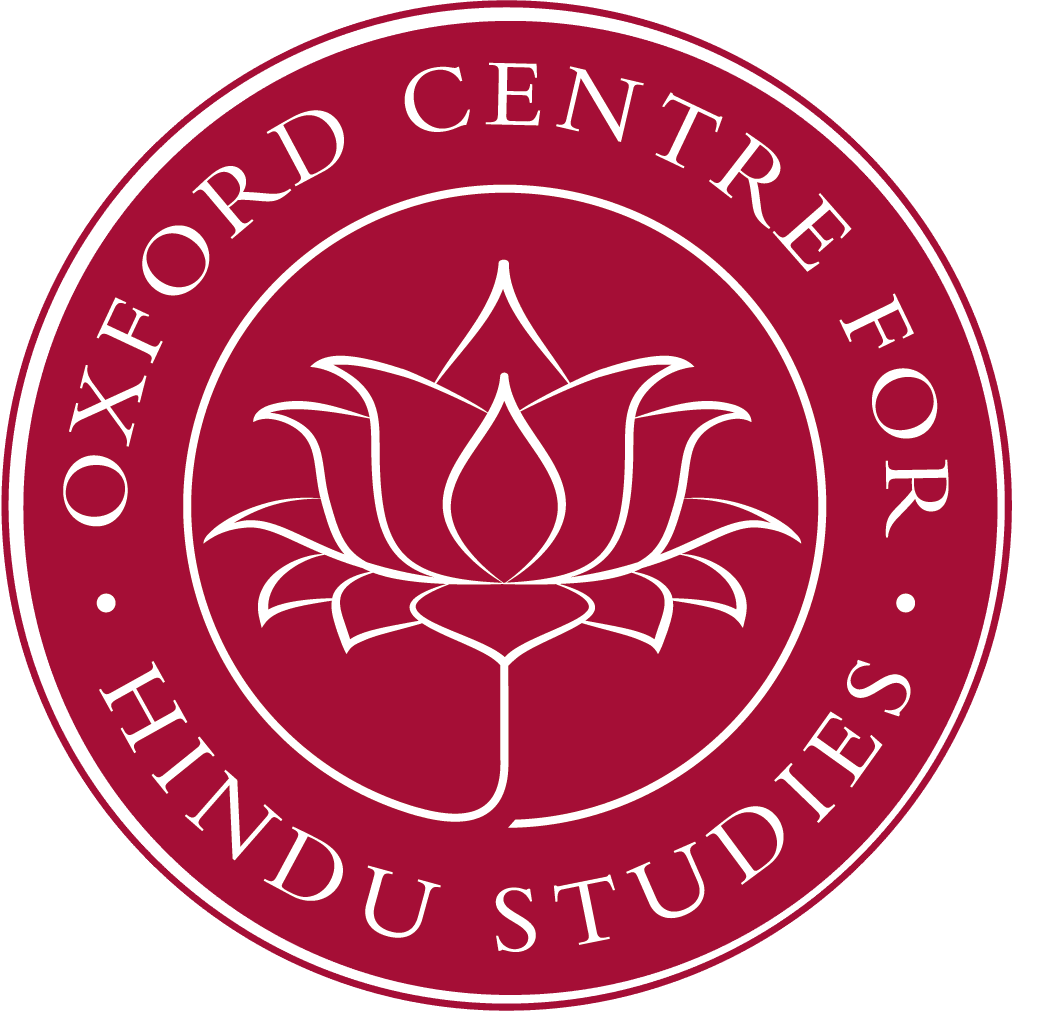Amid theologies of Being and secular philosophies, Gadamer explored a middle ground of non-theistic perspectives, reclaiming a philosophy of immanent ‘spirit’. in his work on Plato and Hegel, he was often in dialogue with the classical Greek and later German traditions of ‘pantheist’ or ‘immanentist’ thought found in Spinoza, Lessing, Schleiermacher, Dilthey, and others. In many respects, Gadamer appears as one of the twentieth century’s first philosophers of immanence.
Archives: Lectures
Graduate Seminars in Indic Religion: Session Four
Capturing the Other Side: Difficulties Facing Religious NGO Groups in India
Ved Patel, Worcester College
Hindu NGOs currently play an integral part in social and disaster relief projects in India. Despite this, they are faced with critiques that can be grouped under the general categories of religious innovation and religious nationalism. On one hand, Hindu NGO groups have been criticized for lacking substantial Hindu theological or textual sources that support or encourage such work. This attempt at engagement, then, is passed off as mimicry of western or Christian based models of social involvement. Alternately, these acts of service have been labeled as nationalistic and supportive of RSS and BJP ideals. Both of these designations can impede additional Hindu NGOs from engaging in a voluntary sector that demands increased participation. This paper will discuss some of the specific critiques that have been aimed at these groups and some of the plausible methods that can be implemented to increase voluntary involvement
Śrībhāṣya of Rāmānuja: A Modern and Contextual Reading
Ionut Moise, Wolfson College
Śrībhāṣya of Rāmānuja (c.12th AD) provides a new commentary on the Vedanta classic text Brahma-Sutra of Bādarāyaṇa (c. 2nd -3rd AD) in the light of the Viśiṣṭādvaita, a branch of Vedanta (one of the six major Hindu philosophical schools). The text expounds Rāmānuja’s interpretation, particularly his doctrine of Karman, or bhakti, whose knowledge, he maintains, is essential for salvation (mokṣa). It is more of a theological work, as he discusses the idea of a personal god (Parama-Puruṣa), endowed with qualities, on which grounds Śaṅkara is frequently criticised. Rāmānuja maintains also the reality of cosmos and the individual souls (ātman). The majority of scholars continue to regard Śrībhāṣya as the most fundamental work of Rāmānuja and Viśiṣṭādvaita, and in modern time has opened new perspectives in the zone of applied theology, and inter-religious dialogue. Here I seek to provide a modern and contextual re-reading of the text.
An Introduction to Vedantic Hermeneutics: Jayatīrtha’s Commentary on the Īśā Upaniṣad: Session Six
Hindu theology, and particularly Vedānta, is grounded in the reading of sacred texts and has been largely developed in commentaries on those texts. This Sanskrit reading class will explore the way Vaiṣṇava Vedānta develops its theology through a careful reading of the Upaniṣads. This term, we will read the commentaries on the Īśā Upaniṣad by Jayatīrtha, an important Dvaita theologian, paying particular attention to the way he builds on the commentary of his predecessor Madhva, and how he develops his theology. This reading class aims to introduce students with an intermediate knowledge of Sanskrit to the style and reasoning of Sanskrit commentaries as well as the fundamentals of Vaiṣṇava Vedānta.
Session 4: Gadamer’s Globalism: Culture, Difference and Pluralism
In the later years of his career, at a retreat exploring religion on the Island of Capri with Derrida and other post-Heideggerian thinkers, Gadamer who insisted that attention to non-Western religions was essential for any steps forward. He encouraged cross–cultural scholars to see themselves as creatively opening up ever-expanding horizons of understanding within their own tradition, and gradually building a new global horizon. Seen in this light, the rich cultural plurality of modern globalism affords us the opportunity to continue a history-long process of growth.
An Introduction to Vedantic Hermeneutics: Jayatīrtha’s Commentary on the Īśā Upaniṣad: Session Seven
Hindu theology, and particularly Vedānta, is grounded in the reading of sacred texts and has been largely developed in commentaries on those texts. This Sanskrit reading class will explore the way Vaiṣṇava Vedānta develops its theology through a careful reading of the Upaniṣads. This term, we will read the commentaries on the Īśā Upaniṣad by Jayatīrtha, an important Dvaita theologian, paying particular attention to the way he builds on the commentary of his predecessor Madhva, and how he develops his theology. This reading class aims to introduce students with an intermediate knowledge of Sanskrit to the style and reasoning of Sanskrit commentaries as well as the fundamentals of Vaiṣṇava Vedānta.
An Introduction to Vedantic Hermeneutics: Jayatīrtha’s Commentary on the Īśā Upaniṣad: Session Eight
Hindu theology, and particularly Vedānta, is grounded in the reading of sacred texts and has been largely developed in commentaries on those texts. This Sanskrit reading class will explore the way Vaiṣṇava Vedānta develops its theology through a careful reading of the Upaniṣads. This term, we will read the commentaries on the Īśā Upaniṣad by Jayatīrtha, an important Dvaita theologian, paying particular attention to the way he builds on the commentary of his predecessor Madhva, and how he develops his theology. This reading class aims to introduce students with an intermediate knowledge of Sanskrit to the style and reasoning of Sanskrit commentaries as well as the fundamentals of Vaiṣṇava Vedānta.
Śāktism among the Śaivas II
Abstract: In the first of these three lectures Professor Sanderson covers the history of Śaivism, setting out his view of its principal divisions, their historical development, and their interaction, and locating on this map the entry point of an influx of Śākta Śaiva forms of ecstatic religion into what had previously been a cluster of austere, highly ascetic traditions. In the second he narrows his focus to examine the history of Śaivism in Kashmir, concentrating on the nature of its Śākta Śaiva elements, notably the traditions of the Trika and Krama, but stressing the importance of seeing how these were embedded within, and interacted with, more exoteric forms of the religion. In the third lecture, he presents evidence that these Śākta Śaiva traditions developed and flourished outside Kashmir in most regions of the subcontinent and that, though much of their later highbrow literature was modelled on the learned exegesis of Abhinavagupta and Ksemarāja there are reasons to conclude that they had pre-Kashmirian histories.
The second and third lectures demonstrate incidentally the inappositeness of the widely used term ‘Kashmir Śaivism’ to refer to the Trika and related Śākta Śaiva systems, the second by showing that these systems co-existed in Kashmir with non-Śākta, Saiddhāntika Śaivism, and the third by refuting or casting doubt on the notion that the Śākta Śaiva systems that received such learned attention in Kashmir in the tenth century were Kashmirian in origin
 Prof. Alexis Sanderson: after a training in Classics, began his Indological career as a student of Sanskrit at Balliol College, Oxford in 1969. After graduation he spent six years studying the Kashmirian Śaiva literature in Kashmir with the Śaiva scholar and guru Swami Lakshman Joo from 1971 to 1977 while holding research positions at Merton and Brasenose Colleges. From 1977 to 1992 he was Associate Professor (University Lecturer) of Sanskrit in the University of Oxford and a Fellow of Wolfson College. In 1992 he was elected to the Spalding Professorship of Eastern Religions and Ethics at Oxford and thereby became a Fellow of All Souls College. He retired from that post in 2015. Since then he has been preparing a critical edition, with a translation and commentary, of the Tantrāloka, Abhinavagupta’s monumental exposition of the Śākta Śaivism of the Trika.
Prof. Alexis Sanderson: after a training in Classics, began his Indological career as a student of Sanskrit at Balliol College, Oxford in 1969. After graduation he spent six years studying the Kashmirian Śaiva literature in Kashmir with the Śaiva scholar and guru Swami Lakshman Joo from 1971 to 1977 while holding research positions at Merton and Brasenose Colleges. From 1977 to 1992 he was Associate Professor (University Lecturer) of Sanskrit in the University of Oxford and a Fellow of Wolfson College. In 1992 he was elected to the Spalding Professorship of Eastern Religions and Ethics at Oxford and thereby became a Fellow of All Souls College. He retired from that post in 2015. Since then he has been preparing a critical edition, with a translation and commentary, of the Tantrāloka, Abhinavagupta’s monumental exposition of the Śākta Śaivism of the Trika.
Pauṣkarāgama: The Śaivasiddhānta Doctrinal Base in its Later Developments–Two commentators, Umāpati and Jñānaprakāśa of Śālivāṭi, Jaffna
Among the available Saivagamas the Pauskaragama is a very important and interesting in many ways. The eight chapters deal with some of the fundamental doctrines of Saivasiddhanta in a thorough fashion. Its importance is also evident by the existence of two elaborate commentaries of which one is still unpublished. In my lecture I will highlight some of the salient features of this text based on those commentaries.
Elementary Sanskrit (MT 14)
The course provides an introduction to Sanskrit for the preliminary paper of the Theology and Religion Faculty in Elementary Sanskrit. The class is designed to introduce students of Theology and Religion to the basics of Sanskrit grammar, syntax and vocabulary. By the end of the course students will have competency in translating simple Sanskrit and reading sections of the Bhagavad-gītā and passages from other texts. The course book will be Maurer’s The Sanskrit Language.
The Habit of Prayer and Prayer in a Habit (MT 14)
Religious Practice in Comparative Perspective Series
The routine activity of the ‘hours of prayer’ forms a major part of the daily life of the different Christian religious orders. This talk will consider what function this prayer plays in the life and goals of religious communities.
Dr. Martin Ganeri O.P. is Vice Regent of Blackfriars Hall, University of Oxford and Director of the Centre for Christianity and Interreligious Dialogue at Heythrop College, University of London. His recent and forthcoming publications include, ‘Theology and Non-Western Philosophy’ in O. Crisp, G. D’Costa, M. Davies and P. Hampson (eds) Theology And Philosophy: Faith and Reason, London: T&T Clarke, 2012 and ‘Selfhood, Agency and Freewill in Rāmānuja’ in E.F. Bryant (ed.) Free Will, Agency, and Selfhood in Indian Philosophy, New York: Oxford University Press, 2014.
